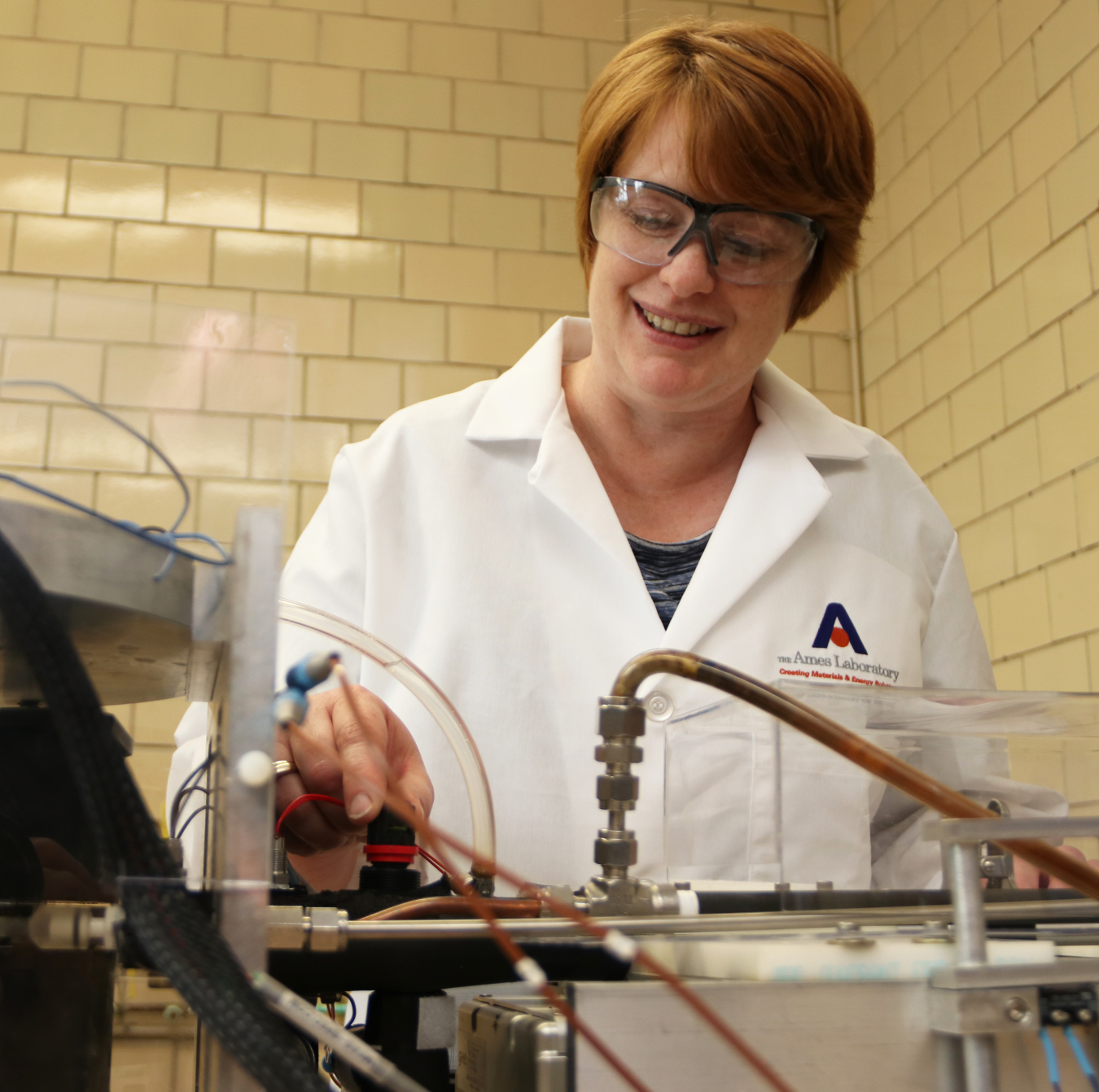Learn why Julie Slaughter loves her job as an Associate Scientist at Ames Laboratory.
June 26, 2019
Julie Slaughter has been an Associate Scientist at Ames Laboratory since 2016. Her work focuses primarily on testing solid-state caloric materials and developing early-stage devices to replace vapor compression systems and the associated gaseous refrigerants in refrigeration, air conditioning and heat pumps. This work has the potential to vastly improve the energy efficiency and environmental impact of cooling in the US and world-wide. Prior to coming to Ames Lab, she worked at a small company researching and developing magnetostrictive transducers for sonar. The small-company environment allowed her to assume many different roles and gain an in-depth understanding of the R&D process which has proved very valuable in her current position. Dr. Slaughter holds a Ph.D. in engineering mechanics from Iowa State University where she studied structural acoustics and vibrations. She also holds a M.S. in mechanical engineering from Iowa State University and a B.S. in mechanical engineering from the University of Missouri - Columbia.
What inspired you to work in STEM?
Growing up on a farm in northwest Missouri, there were very few scientists and engineers as role models and I did not consider those as possible career paths in spite of my interest in math and science. In my second semester at college I found myself in several liberal arts classes and it did not feel like the right path for me. After discussing options with friends and family, I talked to an undergraduate advisor for mechanical engineering; the combination of applied math and science really appealed to me. I dropped all my classes and enrolled in prerequisites for mechanical engineering instead – that put me on the path to where I am today.
What excites you about your work at the Energy Department?
The intense focus of the DOE on energy-related problems and how to solve them drives all aspects of research and development at Ames Lab. Every day when I come to work I have the opportunity to help solve problems that can make a real difference in people’s lives and on the environment. Innovation, creativity, and hard work are valued and there are many opportunities for new and exciting research.
How can our country engage more women, girls, and other underrepresented groups in STEM?
As a mother of two daughters, I struggle with this question a lot. It is very important that underrepresented groups are exposed to STEM from an early age and see role models like themselves in STEM careers. Gains in STEM participation will take a long-term, sustained effort at recruiting underrepresented faculty, scientists, and leaders; providing support and opportunities for success; and breaking down stereotypes.
Do you have tips you'd recommend for someone looking to enter your field of work?
Keep learning throughout your career - science and technology are not static so stay current in your area of expertise and related research. It is also very important to meet as many people as you can and learn about the problems they have or the problems they are trying to solve. Research projects are increasingly collaborative and interdisciplinary requiring teams with diverse skills and backgrounds. By having a large personal and professional network, you will have the resources necessary to build teams when opportunities arise.
When you have free time, what are your hobbies?
I have a big garden that includes fruit trees, berries, and lots of space for vegetables. Even in the garden, I like to research and experiment - last year I found out that you can grow peanuts in Iowa! I also enjoy reading and spending time with family and friends.
Learn more about our programs & resources for women and girls in STEM at http://www.energy.gov/women

